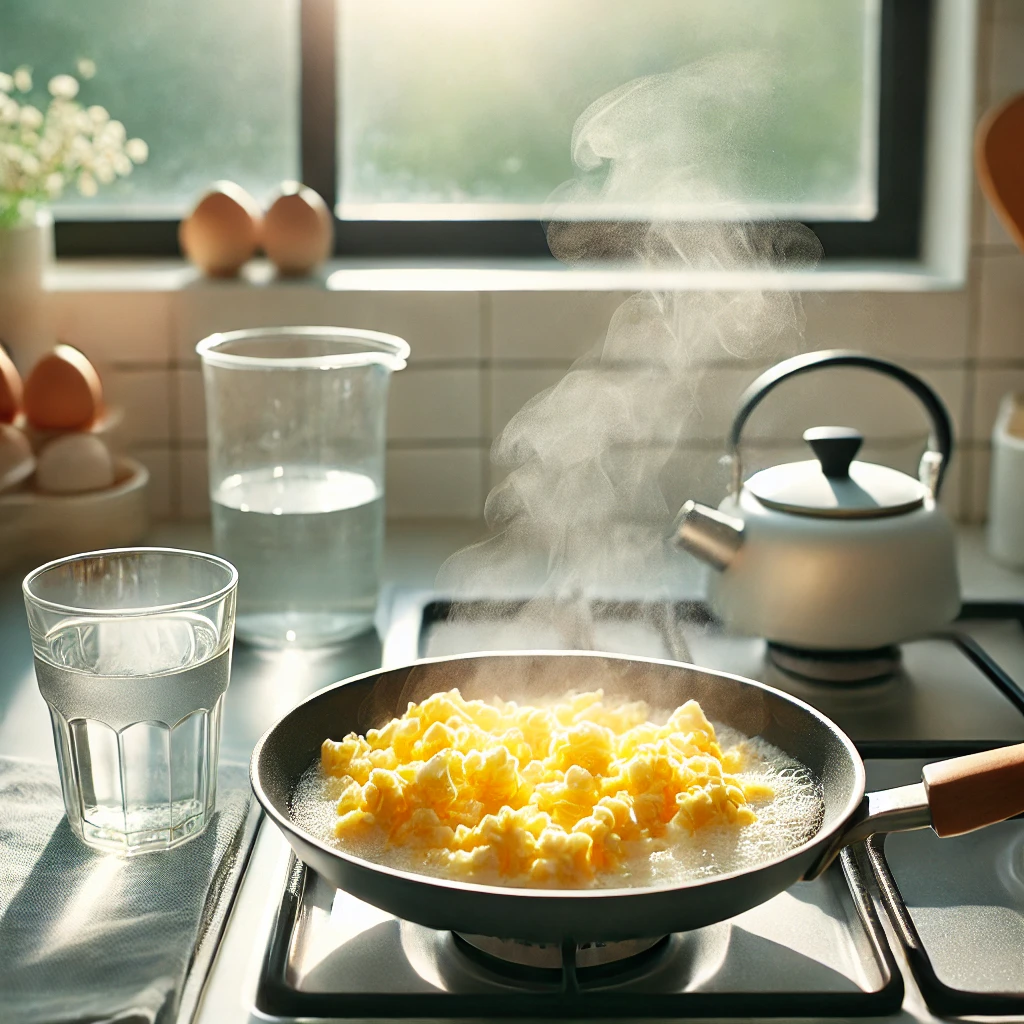While making scrambled eggs with my brother, I noticed he added a splash of water to the eggs before cooking them. Naturally, I was curious—why would he do that? It turns out, this little trick is a game changer for getting fluffier, softer scrambled eggs. Let’s dive into why adding water can improve your scrambled eggs and how you can try it for yourself.
The Science Behind Adding Water to Scrambled Eggs
Adding water to scrambled eggs might seem counterintuitive, but there’s a simple reason behind it. When the water heats up in the pan, it turns into steam. This steam gently puffs up the eggs, making them lighter and fluffier. Instead of eggs that are dense or rubbery, you get a tender, melt-in-your-mouth texture.
Think of it as giving your eggs a little boost during cooking. The water prevents the eggs from cooking too fast, which can often result in overcooked, dry eggs. By slowing down the cooking process, you end up with creamy, airy scrambled eggs.
How to Add Water to Scrambled Eggs
If you’re eager to try this technique, here’s how to do it:
- Crack the Eggs: Start by cracking your eggs into a bowl, just like you normally would.
- Add Water: For every two eggs, add about 1 tablespoon of water. You don’t need a lot—just a small splash.
- Whisk Well: Whisk the eggs and water together until fully combined. The mixture should be light and a bit frothy.
- Cook as Usual: Pour the egg mixture into a hot pan, and cook them over medium heat while gently stirring.
You’ll notice the difference right away—your scrambled eggs will puff up beautifully and have a much softer texture.
Why Not Use Milk Instead of Water?
Some people prefer to add milk to their scrambled eggs for a creamier result. However, milk can sometimes make the eggs a bit heavier and even watery if not carefully cooked. Water, on the other hand, evaporates quickly during cooking, leaving behind nothing but steam, which helps keep the eggs light without affecting their flavor.
Adding water instead of milk also allows the true taste of the eggs to shine through. So, if you’re looking for eggs that are fluffy and not weighed down, water is the better option.
A Few Additional Tips for Perfect Scrambled Eggs
- Use Low to Medium Heat: Cooking your eggs over low to medium heat ensures that they don’t overcook or become rubbery.
- Don’t Over-Stir: While it’s important to stir your eggs, don’t overdo it. Stirring too much can break down the structure, leading to a denser result.
- Season at the End: Some chefs prefer to season their scrambled eggs at the end of cooking to prevent the salt from drawing out moisture too early.
Try It Out!
Next time you’re making scrambled eggs, give this water trick a shot. It’s a simple adjustment that can make a big difference in the texture of your eggs. Whether you’re cooking breakfast for yourself or impressing someone with your culinary skills, this tip will ensure your scrambled eggs are fluffier, softer, and more delicious.
Final Thoughts
Who knew that such a small splash of water could transform your scrambled eggs? My brother’s simple cooking tip has definitely become a favorite in my kitchen, and I’m excited to share it with you. Next time you’re whipping up scrambled eggs, give this method a try—you’ll love the results!
Advertisement
What other small cooking tricks have you learned that make a big impact? Let me know in the comments below!

